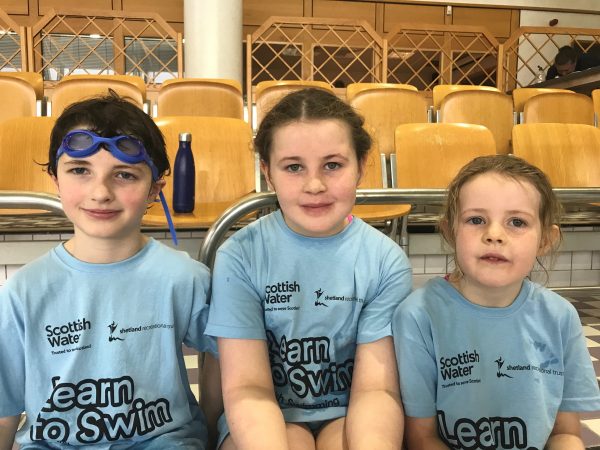The Kids Who Fly to Swim
Three children recently staked a claim to be the most dedicated group of kids learning to swim in the UK – as their lessons involve a flight across the North Sea from a remote Scottish island.

Freyja Parnaby, 6, Grace Parnaby, 9, and Lewis Wright-Stanners, 9, have to take regular flights from Fair Isle to a tiny airstrip on Shetland so that they can gain have swimming lessons organised by Shetland Recreational Trust who deliver the National Learn to Swim Framework in partnership with Scottish Water.
The children, from Fair Isle Primary School, take the 25 minute flight with their head teacher, Ruth Stout funded by the education department – and often they have to live with the worry that their trip back may be cancelled, due to adverse weather, and they will be left stranded.
To complete their arduous 55 mile journey, they have to take a 15 minute drive from the isolated Tingwall Airport to the Clickimin Leisure Complex in Shetland’s capital, Lerwick.
Ruth said: “As we don’t have a pool on Fair Isle, for the kids to be able to learn to swim we simply have to fly to the nearest pool.
“About 50% of our lessons that we plan don’t happen as the weather often sees our flights get cancelled at short notice.
“It’s not the smoothest journey from Fair Isle to Tingwall – in the summer there can be too much fog to fly and in the winter too much wind.
“So we just have to be flexible. We always over pack, for example, because we can’t take it as a given that if we do make it to the mainland we’ll be able to get back.”
Fair Isle – which is home to just 60 people – is the most geographically remote inhabited island in the United Kingdom, lying 25 miles away from the Shetland Mainland and 237 miles away from Norway.
Thanks to the education department Ruth and her class of three stay at Anderson High School’s Halls of Residence on Shetland for two to three nights at a time so they can fit in multiple swimming lessons at Clickimin Leisure Complex, as well as free time in the water, during their visits.
Ruth added: “The kids can all develop their skills at their own pace – so even if bad winds mean we miss a number of lessons in a row, we can just pick up where we left off.
“On Fair Isle the kids do swim in the sea, but for lessons and learning particular skills pool time is essential.”
Ruth also has to contend with planning the kids’ schedule months in advance, booking at least two return flights and up to six lessons for the children every term time.
Shetland is the UK’s most northerly provider of Scottish Swimming’s Learn to Swim Framework, and some 900 youngsters from across the Shetland Islands are receiving lessons at eight pools delivered by Shetland Recreational Trust.
Gary Morgan, Lead Aquatics Teacher at Clickimin Leisure Complex, added: “It’s always a pleasure to teach the children from Fair Isle, especially given the remarkable effort they make to travel to the pool. Their enthusiasm is wonderful and it’s great to have the Learn to Swim Framework to document their progress”
Overall, the national Learn to Swim programme aims to reach more than 100,000 children across Scotland, allowing them to develop confidence, skills and a real love of swimming.
Forbes Dunlop, CEO of Scottish Swimming, said: “It’s just fantastic to see the lengths that the education department and Fair Isle Primary School is going to, to make sure that its can join in the Learn to Swim Framework and the pupils are safe and confident in the water.
“Thanks to aquatic providers like Shetland Recreational Trust, children can join those elsewhere in the country in being able to take part in a programme and be able to learn such an essential life skill.
Brian Lironi, Director of Corporate Affairs for Scottish Water, said: “Shetland – and remote islands such as Fair Isle – are surrounded by water so it’s so important that children, from a young age, are competent swimmers.
“We’re extremely proud to be supporting the Learn to Swim Framework across Scotland and it’s fantastic to see that, even when pools aren’t always within easy reach, geography is no barrier to learning to swim.”
The Learn to Swim Framework helps to create quality Learn to Swim environments for children from birth upwards where they can become competent swimmers with opportunities to progress through the aquatic pathway and to swim for fun.



